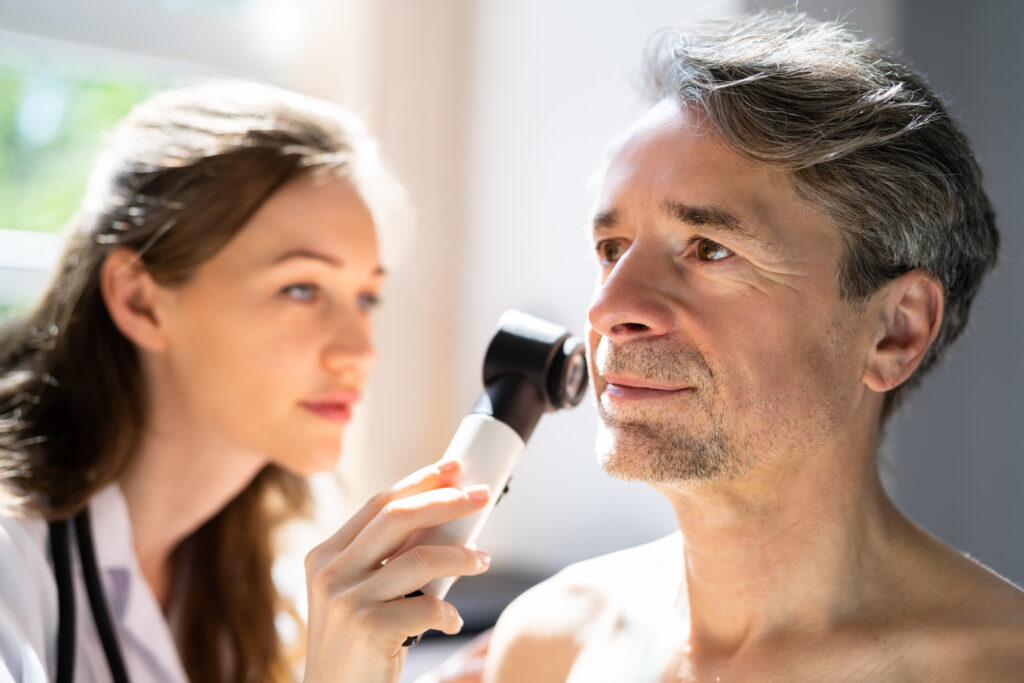What is an Annual Skin Check?
An annual skin check is your first line of defense against skin cancer. Skin cancer is the most common type of cancer affecting one in five Americans at some time in their lives. As with all cancer, early detection is essential to diagnosis and treatment. Early detection can save your life.
The challenge is simple: it’s frankly difficult to check all parts of your body such as your scalp, neck and back.
During a skin check with one of Moy, Fincher, Chipps Facial Plastic & Dermatology’s board-certified dermatologists, they’ll examine your body and be able to evaluate any suspicious looking spots that look potentially dangerous/ concerning. In addition, the skin check creates a record, that can be referenced in the future, to monitor changes in spots as you progress.
The ABCDE’s of moles and suspicious growths are warning signs that signal the development of potentially malignant changes. They are designed to help one recognize potential skin cancers early when they are most easily cured.
Our dermatologists with expertise in diagnosing and treating skin cancer will look for these signs and symptoms in moles and skin lesions during your skin check. Any growth that causes pain or bleeding and won’t heal is cause for concern. If you spot a lesion that manifests the signs of ABCDEs during a self-check, treat that as an alert to seek the professional opinion of a board-certified dermatologist.
Skin cancer by the numbers
One in forty Caucasian women are likely to develop melanoma. Hispanic women have a higher incidence of melanoma. By age 50, men are more likely to develop melanoma than women. Men at any age are twice as likely to die of melanoma than women. When caught, early melanoma is almost always curable. When you have a skin cancer concern, contact Moy, Fincher, Chipps Facial Plastics & Dermatology with offices in Beverly Hills, Encino, and Torrance, CA.






